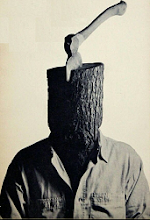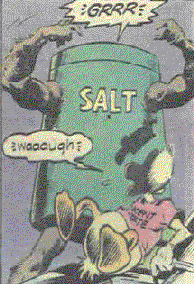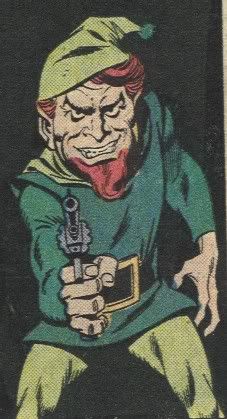The comic book industry is in trouble. Again.
There is cause for optimism. The industry has nearly died several times in the past, and yet it carries on. Accounts of comic companies are filled with tales of “we almost collapsed here, until we tried X...” Comics, in the aggregate, seem to be as hard to destroy as cockroaches.
There is also cause for pessimism. The number of comic book readers appears to be shrinking wildly. When I began collecting them as an eleven year old boy, I was one of many children in the comic shops. They’re quite rare now. Without replacement readers, the industry cannot survive.
Since I’m too lazy to see if somebody else has charted the path the industry took to reach this state of affairs, I figured I’d start this blog by trying to figure out both how it got there, what the future likely holds, and, since it’s my blog, a couple of suggestions.
To any and all readers, please note that the only reason I’m writing this is to synthesize the various pieces of information I’ve found over the years and see if I can make heads or tails of this debacle. I expect that my analysis and prognostications are ill-informed and missing key pieces of information. But until I know what my mistakes are, I’ll push forward with my theories. If anyone in internet-land can fill in a gap or if I’m wrong in my history, please feel free to correct me.
As this is the internet, don’t hesitate to call me a pederastic walrus-fondler or an un-American pudding enthusiast as you do so. When in Rome, after all.
In the beginning
The industry was born out of pulp magazine publishers. Printing on cheap available paper, using distribution networks already in place, they sent out their colored pamphlets to capture a small sum of money.
(Gerard Jones recently put out a book that ties the early days of comics and pulps to rumrunners, but I haven’t read it yet. I'm sure it would help me add meat to this, but hey. This is the internet! Do I need evidence? Ha! I say ha!)
As is typical for the publishing world, the profits in comics were small, and the industry hovered near the point of collapse a number of times. It also went through boom times, which made the depths of low sales feel all the deeper. Again, this fits the standard publishing model.
Comics boomed in the early Sixties, with the Marvel Comics explosion. The Adam West/Burt Ward “Batman” series helped fuel another boom in the late Sixties. But by the end of the decade, the industry was in trouble. Again.
In the forward to the Ironwolf graphic novel, Howard Chaykin wrote that in the early Seventies, he and his young cohorts in the industry figured they were presiding over the end of the industry, and created comics to either grab as much attention as possible (Green Lantern/Green Arrow’s attempts at social and political relevance, the bizarre revamp of Wonder Woman into a non-superpowered kung fu artist in a white pants suit) or go out in a blaze of artistic glory (Manhunter, the aforementioned Ironwolf, others that escape me right now).
The evidence I can find in a quick peruse of the internet backs him up. There was the fabled DC Implosion of the early Seventies, when the company drastically cut back on the number of titles it produced, and it's not hard to find evidence of periodic expansions and retreats of titles at Marvel during that same period.
Things take a turn
The success of comics as a popular culture art form prompted some folks to open up specialty stores that sold only (or mostly) comics. For a number of reasons, these stores established a unique relationship to the publishers in the Seventies. They became the Direct Market.
The Direct Market created a solution to a major problem of magazine publishing. Distribution to newsstands and spinner racks is incredibly inefficient. Retailers would buy, say, six copies of Nuclear Squirrel and His Atomic Acorns. A month later, they’d strip off the covers of the unsold copies and send them back to the publisher for a refund or credit. Just the same as any other magazine.
This meant that massive print overruns were a necessity. A great deal of a comic company’s expense came from these overruns. A quick scan of ye olde internette suggests that about seventy percent of comics were returned unsold. That’s a lot of cost to eat.
The Direct Market ended the need to print overruns. What the comic shop purchased from the publisher was theirs and theirs alone. They could not return unsold merchandise.
Reducing the need to print overruns, the industry had a measure of stability and guaranteed distribution that allowed for unprecedented growth and profits. Also, a direct market shop would be able to sell product better, as they know and love the stuff, and they can gather up all the interested customers in an area.
Today the Direct Market makes up about ninety percent of comics sold. Ninety percent. Ye gods.
Evolution and Mutation
In the Eighties, comics experimented with new forms and new formats. Printing costs rose, as did the price of available talent. Cover prices rose to match, but circulation remained strong.
In short, there was a lot of money to be had in comics. As is so often the case, the possibility of riches led to a series of unfortunate events.
In the mid-nineties, comics ceased to be put out on the newsstands and spinner racks. The logic behind it is defensible, if insane. Newsstand runs are returnable. The publisher eats the costs for all unsold issues. The Direct Market is efficient, simpler, and the best market to try out new wares, since the customers are already inclined to purchase new product. For the publisher, it’s a massive improvement.
Eating the Seed Corn
The Direct Market has one major weakness: it does not attract new customers. The hideous inefficiencies of the newsstand market, while a major anchor on the publishers, did provide them with a flow of new readers.
As the last few years have proven, even massive publicity cannot provide new readers in any number. Wildly successful comic book movies, press coverage, crossover talent, none of it has affected the drop in sales.
The issue appears to be simple availability, not publicity. Comics sell widely when easily found, and cannot draw new readers when isolated in comics-only stores. The average age of the comic book reader is thirty-some-odd and rising.
There’s no avoiding the conclusion: the industry does not reach new readers.
Why did the industry abandon the newsstand? Did the newsstand abandon comics?
The exact details of the end of newsstand distribution is a mystery to me. If any readers out in internetland know the story or can point me in the right direction, please help a brother out.
Money, money, money
Another issue confronting the industry is rapidly increasing cover prices. Raising prices is never good for attracting new customers, especially for ephemera like comics.
As the Direct Market improved sales and reduced the risks of printing, the comic industry began new marketing tactics. This included new-fangled printing technologies, improved paper stocks, and novelty covers. What once was a sixty or seventy-five cent comic became a two-dollar plus item in little time.
Here are the cover prices of an average Marvel comic since 1982. The years selected are the years when cover prices rose.
1982 $0.60
1986 $0.75
1989 $1.00
1992 $1.25
1994 $1.50
1995 $1.95
1998 $2.50
2000 $2.99
Granted, these price increases are partially the result of inflation. Sixty cents today doesn’t buy what it did twenty-two years ago. Below are the prices again, this time with the numbers adjusted to 1982 dollars.
1982 $0.60
1986 $0.89
1989 $0.77
1992 $0.83
1994 $0.94
1995 $1.20
1998 $1.43
2000 $1.64
Even controlling for inflation, comic prices have almost tripled in twenty years. The bulk of the increase came post-1994, which is roughly when the bottom fell out of the infamous speculator market and circulation began to plummet.
As late as 1994, comics were a throwaway item. They were relatively inexpensive and widely available. Within six years, they had not only reduced their public visibility by a radical amount, they’d doubled their price without any corresponding gain for the customer.
Publishers have tried to offset these price increases by improving paper stock and printing technology. They have also claimed that the cost of publishing has risen over the years, a claim I’m trying to investigate. How much of this increased cost of publishing is tied in with the self-inflicted cost increases of new color printing technologies and better stocks of paper, well, I don’t know.
(As I said in the beginning, I’m just a layman trying to figure out what’s been going on. There are almost certainly good answers. I just don’t have ‘em.)
Still, it seems highly unlikely that the costs of printing could have risen between 1994 and 2000 that could alone justify a $1.50 price increase.
The true root cause seems obvious. The comic industry is trapped in a painful cycle. As the readership dwindles, it must hike prices on its comics to match the revenue shortfalls. However, as prices rise, readership declines. A classic death spiral.
Harvey Jerkwater’s Half-Assed Plan
The problem the industry faces is distribution. That’s it. Simple as that.
Publicity has failed. How many folks saw the Spider-Man movies? Tens of millions, at least. How many of them, filled with love for Marvel’s flagship character, ran off and bought their first Spider-Man comics? Not many. The internet doesn’t help garner new readers, either.
The industry periodically tries to make its books more “first-reader accessible” and kid-friendly. But without distribution, these kid-friendly books won’t end up in the hands of kids. It’s not as though children frequent comic shops, look for something age-appropriate, and leave in frustration, looking only for the right book. Availability is the key.
To survive in anything resembling its current form, the industry must recognize its strength as an impulse buy and regain easy availability.
This will bite into profit margins hideously, at least in the beginning. However, now is the perfect time to perform such madness. Marvel and DC are both flush with cash from licensing agreements, which will likely dry up as time passes.
My suggestion is to develop a two-tiered publishing system. The direct market can be left alone. Concurrently publish a small line of titles, say six or ten, for the newsstand only. For this second line:
1. Base these titles on pre-existing characters and make them all-ages. (Marvel’s “Ultimate” line began this way, but has become simply a second line of standard Marvel product. It certainly isn’t all-ages anymore. This was a mistake.)
2. Hire industry veterans for the line who will produce work on-time and to specifications. Stick to prolific workers. The fewer hands involved, the lower production costs will be.
3. Print the line on cheaper paper and with less sophisticated techology to hold the costs down.
4. Keep the cover prices below the direct market books. Under two dollars, if possible. The books must be cheap enough for kids to purchase without feeling ripped off.
5. Ensure a large presence on the internet is established and maintained. Currently, neither of the Big Two publishers do it, which is surprising. Both Marvel and DC’s websites and internet presence are feeble.
If only one of the Big Two creates this secondary line, they will achieve a monopoly on a significant portion of the market and wildly increase the value of their licensing due to larger publicity. The high visibility of the newsstand line would also do much to aid the sales of direct market books and trade paperbacks, since the customer base would have personal experience with the works themselves.
Okay, So It Probably Can't Happen, and Other Thoughts
Okay, it probably can’t happen, but it’s worth considering.
What’s important to consider is that while the industry of comic publishing in the United States is dying, the medium itself is thriving better than it ever has. Manga are wildly popular and sell like mad in bookstores. The internet is littered with comics of various sorts. The mainstream press covers graphic novels now without quite so much sarcasm.
To be snotty (well, snottier than usual), the decline of the printed word works in comics’ favor. In a nearly post-literate era, the comic stands a better chance of public acceptance than ever before. Magazine sales have stagnated since 1990, and reading is down. It’s not so crazy to think that books with lots of pictures in ‘em might do well in such conditions.
But that’s all potential. The comic book industry as it now stands is in a state of slow decay, and everybody knows it. It will probably survive somehow, though evolved into yet another form and likely much smaller.
Also, mainstream acceptance has occurred at least twice before: during the initial Marvel Comics boom of the mid-Sixties, and in the late Eighties, behind Watchmen, The Dark Knight Returns, and Maus. There’s always the possibility that comics will lose their cachet and return to obscurity.
One possibility for the industry is to mimic comics’ forerunner, pulp novels. Despite their market collapsing in the forties and fifties, the pulps never truly died. The heirs to “The Shadow” and “Spicy Romance” can be found in bookstores as Harlequin romances and the violent “Executioner” and “Destroyer” novel lines, all of which are produced as monthly series. Not an enviable fate, but survival of a sort.
Letting the Days Go By
My plan is probably wrongheaded, in that it’s mostly a Bold Leap Backwards, predicated on the idea that the abandonment of the newsstand market was foolish grab for short-term profits, not a necessity of the marketplace. Still, I believe the idea merits examination.
Often, unnecessary business changes are left in place due to inertia or worse, to the fear businessmen have of looking like a fogey or a toady by restoring abandoned methods. Businessmen, as a rule, don’t like to reapply old methods to new problems. Apparently it’s frowned upon.
Distribution networks already exist. Magazines reach stores every week. Perhaps comic publishers could piggy-back on their network. DC is owned by Warner. Surely they have the means.
Given that a non-businessman like me sees this as an obvious recourse, there must be hurdles that I don’t know about. Probably very large ones. Wish I knew what they were.
What’s Actually Going On
There’s a lot I’m not covering here. The industry does appear to be struggling for survival. Right now, the main plan appears to involve a shift into trade paperbacks and bookstore sales, which creates a whole series of new problems.
Another possibility to consider is that the Big Two are primarily character licencing operations now, and saving the printing arms of the company may not be worthwhile. Perhaps the death of comic books isn’t that important to them financially, and they’re content to let the direct market wheeze from dotage to the grave.
I’ve also read that Disney is pursuing a plan very much like what I’ve suggested above. If anybody can pull this off, it’d be Walter’s mighty corporation.
Also, major book publishers like Scholastic, Del Ray, and Holt are pushing into graphic novel territory. What this means, I have no idea.
Honestly, I don’t know a lot about what’s going on, folks. I’m just a fan who’s trying to make sense of things.
I’ll do a bit of research and write about these developments in a later post, maybe develop a more accurate picture of what is really going on. This post is a first sally into the field.
In Conclusion
The Big Two comic book publishers are in trouble. They don’t appear to be pulling out of the death spiral, for reasons unclear.
Yet there is great cause for optimism. The medium itself grows in acceptance and artistic depth. It’s faced extinction time and again, yet it’s still here.
I am reminded of a quote from The Adventures of Baron Munchausen: “That was only one of the many occasions on which I met my death.” Indeed.
Comics have died many times, and yet won’t stay dead.
Cool.
Click here to read more!




